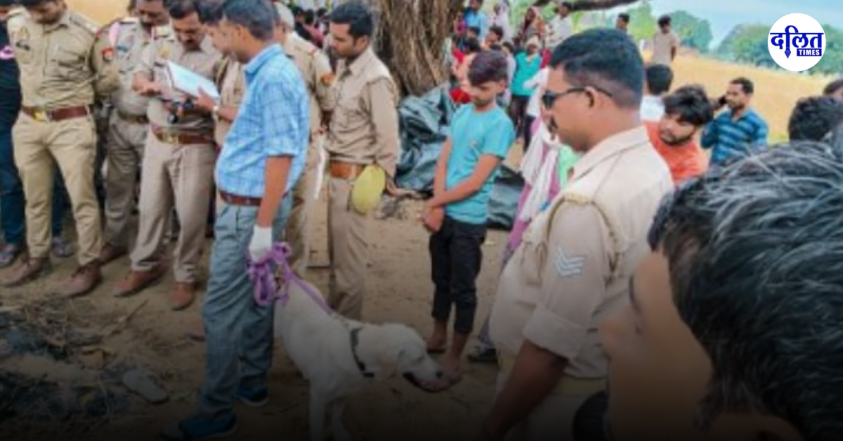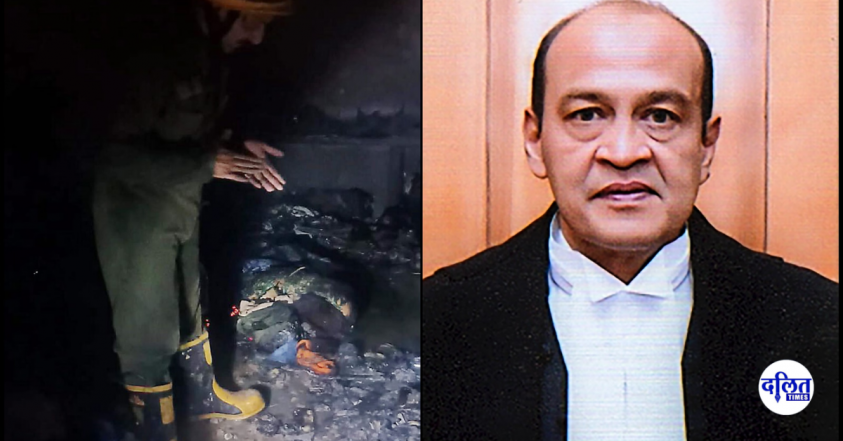The Supreme Court of India delivered a landmark judgment in Balram Singh v. Union of India on October, 2023, renewing national focus on the dehumanizing and caste-based practice of manual scavenging. A Division Bench led by Justice S. Ravindra Bhat and Justice Aravind Kumar issued 14 far-reaching directions to enforce the Prohibition of Employment as Manual Scavengers and their Rehabilitation Act, 2013 (PEMSRA 2013).
These directives emphasize the complete mechanization of sewer and septic tank cleaning and holistic rehabilitation for affected individuals and families. This judgment affirms the constitutional guarantees enshrined in Article 17 (abolition of untouchability), Article 21 (right to life with dignity), and Article 41 (right to work and assistance), demanding not just legal compliance but moral transformation in the Indian state’s approach to caste-based labour.
From Safai Karamchari Andolan to Balram Singh
In Balram Singh v. Union of India, the petition emerged from years of unresolved public concern over continued deaths in sewers and septic tanks, despite judicial intervention in Safai Karamchari Andolan v. Union of India (2014), which had already mandated compensation and reform. The government’s own data revealed that between 2018 and 2023, 443 deaths occurred due to hazardous sanitation work. However, civil society estimates suggest these numbers are underreported. Crucially, the petition highlighted not only deaths but the structural impunity protecting municipalities and contractors, who continue to flout the law with little fear of prosecution.
Directions of the Supreme Court
The 14-point directive of the Court is a blueprint for both legal enforcement and social accountability:
- Complete Ban on Human Entry into Sewers and Septic Tanks
“No individual should be made to enter sewer lines or septic tanks under any circumstances.” The Court unequivocally banned all forms of manual entry into hazardous waste systems, emphasizing technological substitution over human exploitation.
- Alignment of State and Municipal Frameworks
States and Union Territories must synchronize their laws, bylaws, and contracts with national SOPs, ensuring real-time data collection, accident tracking, and enforcement. Local bodies can no longer hide behind jurisdictional ambiguities.
- Comprehensive Rehabilitation: A Continuum, Not a Transaction
In a decisive shift from the piecemeal approach often adopted by the State, the Supreme Court in Balram Singh v. Union of India affirmed that rehabilitation for manual scavenging-affected families is not a one-time monetary transaction but a sustained and holistic process.
Recognizing the compounded trauma and socio-economic marginalization suffered by these communities, the Court mandated a multidimensional rehabilitation framework. This includes:

(1) priority government employment for the next of kin of workers who died in hazardous sewer or septic tank operations;
(2) educational support for children through scholarships, tuition waivers, and hostel access to ensure intergenerational upliftment;
(3) access to permanent housing, public healthcare services, and tailored skill development programs; and
(4) ongoing psychological and community-based support mechanisms to address the trauma and isolation faced by families.
The Court’s insistence on structural rehabilitation not only aligns with Section 13 of the PEMSRA 2013, but also reinforces the Directive Principles of State Policy—
especially Articles 39(e), 41, and 46—which obligate the State to protect the economic and educational interests of the marginalized. By embedding dignity into the rehabilitation process, the judgment reorients the discourse from compensation to justice.
- Enhanced Compensation
The Court raised the compensation from ₹10 lakh to ₹30 lakh for deaths related to sewer and septic tank cleaning, framing this not as ex gratia but as State liability. This revision reflects the gravity of systemic neglect and intergenerational caste-based trauma.
Legal and Constitutional Implications
The verdict in Balram Singh is grounded in constitutional jurisprudence:
• Article 17: Declares untouchability in all its forms unconstitutional. Manual scavenging is its most violent expression.
• Article 21: The right to life includes dignity, safety, and humane working conditions.
• Article 23: Prohibits forced labour—manual scavenging often occurs under conditions of economic compulsion and social coercion.
• Directive Principles (Articles 38, 39(e), 41, 46): Obligate the State to ensure humane working conditions, safeguard Scheduled Castes, and promote social justice.
Also Read : Odisha Expands Reservation in Higher Education: A Step Toward Inclusive Policy Reform
Deaths Continue Despite Legal Prohibitions
Despite the Court’s strong stance, manual scavenging continues unabated:
Recent Fatalities (2024–2025)
- 2024 (May):
– Uttar Pradesh: Eight deaths across Lucknow, Noida, and Mughalsarai due to septic tank cleaning without safety equipment.
– Delhi: Four sanitation workers died in separate sewer-related incidents.
• 2025 (as of February):
– Delhi: Seven deaths
– Hyderabad and Kolkata: Three deaths each
(Sources: GroundXero, Frontline, Tribune India, The Indian Express)
These figures contradict official claims of eradication and reveal gross lapses in enforcement and accountability.
Data Discrepancies and Definitional Manipulations
The Union Government maintains that no deaths have occurred due to “manual scavenging” in recent years. This is because, under PEMSRA 2013, the term is narrowly defined to exclude sewer and septic tank cleaning. These are instead labelled as “hazardous cleaning,” allowing officials to claim statistical eradication while the practice thrives under a different name.
According to the National Commission for Safai Karamcharis, 1,289 deaths occurred due to sewer and septic tank work between 1993 and December 31, 2024—a number many believe to be vastly underreported.
Why Manual Scavenging Persists: Structural Factors
- Caste-Based Division of Labour
Manual scavenging remains one of the starkest reminders of caste-based occupational segregation in India. As of 2024, nearly 97% of individuals engaged in manual scavenging belong to Scheduled Castes, with official records identifying over 42,000 SC persons still trapped in this dehumanising work. This disproportionate representation is not incidental—it is rooted in the historical and systemic relegation of Dalits to the most degrading forms of labour.
Social coercion, caste stigma, and lack of alternative livelihood opportunities function together to restrict mobility and entrench this oppressive division of labour. Despite legal prohibitions, the persistence of manual scavenging illustrates the failure of the state to dismantle caste hierarchies in practice.
- Lack of Mechanization
Despite the availability of modern equipment, only around 30% of municipalities in India reportedly use mechanized cleaning methods on a regular basis. This limited adoption is not due to technological scarcity, but rather a combination of financial constraints, bureaucratic inertia, and deep-seated caste biases that continue to normalize the use of Dalit labour for hazardous sanitation work.
The slow transition to mechanization reflects not just administrative failure but a systemic disregard for the dignity and lives of manual scavengers, reinforcing their social disposability within the caste order.

- Weak Legal Enforcement
Although manual scavenging is banned under the Prohibition of Employment as Manual Scavengers and their Rehabilitation Act, 2013, legal enforcement remains abysmally weak. In Delhi alone, 94 sanitation worker deaths over 15 years have led to just one conviction, exposing the hollowness of the legal system when it comes to protecting Dalit lives.
Contractors routinely flout the law, employing workers through informal channels to evade accountability and oversight. The lack of punitive action against violators not only emboldens perpetrators but also signals institutional complicity in sustaining this caste-based atrocity.
- Economic Vulnerability
Manual scavengers are among the most economically marginalized communities in India—often unskilled, landless, and illiterate, with little to no access to alternative livelihoods. This structural deprivation leaves them trapped in exploitative work, with social stigma further limiting their mobility.
While government rehabilitation schemes exist on paper, they are frequently underfunded, poorly implemented, or inaccessible, failing to provide meaningful support or sustainable exit routes. Economic precarity thus becomes both a cause and consequence of manual scavenging, reinforcing a vicious cycle of caste-based oppression and poverty.
Recommendations and Way Forward
To translate judicial pronouncements and constitutional safeguards into meaningful change, a multi-pronged, accountability-driven approach is essential. First, a National Oversight Mechanism must be established, incorporating safai karamchari unions, Dalit rights organizations, and legal aid providers to ensure continuous monitoring and grassroots representation. The Ministry of Social Justice and Empowerment should be mandated to publish monthly data on sanitation worker deaths, rehabilitation efforts, and legal prosecutions to ensure transparency. Strict penalties must be enforced on local bodies and contractors who violate the law, including criminal liability for non-compliance.
Simultaneously, sustained investments in skill development, education, and community-based support are vital to break the generational cycle of caste-based labour. Lastly, mass awareness campaigns in local languages—led by trusted community intermediaries—can empower workers with knowledge of their rights and the schemes available to them. Only through systemic reform rooted in dignity, justice, and accountability can manual scavenging be truly abolished.
NHRC’s Response to Balram Singh v. Union of India
The National Human Rights Commission (NHRC) acknowledged the urgent need for systemic reforms to end hazardous sanitation work and manual scavenging. Welcoming the Court’s directions, the NHRC emphasized the responsibility of both the Union and State governments to implement the judgment in letter and spirit. It reiterated that continuing deaths in sewers and septic tanks constitute gross human rights violations and called for immediate compliance with the enhanced compensation norms, mechanization mandates, and rehabilitation guidelines laid down by the Court. Further, the Commission urged State Human Rights Commissions to proactively monitor sewer-related deaths and directed local authorities to maintain transparent records and grievance redressal systems. The NHRC underlined that the dignity of sanitation workers must be upheld as a non-negotiable constitutional guarantee, and any failure to comply would invite legal and institutional accountability.
The Supreme Court’s verdict in Balram Singh is not just a legal pronouncement—it is a moral reckoning. Manual scavenging is not an administrative challenge, but a caste atrocity masquerading as public service. As long as Dalits are forced into this work, India cannot claim to be a constitutional democracy that guarantees dignity and equality.
The judgment demands action, not tokenism. Its legacy must be written in mechanized manholes, rehabilitated lives, and the erasure of caste from labour. The law has spoken. Now, the State must listen—and act.
Adv.Bindu Ammini /Dalit Feminist



